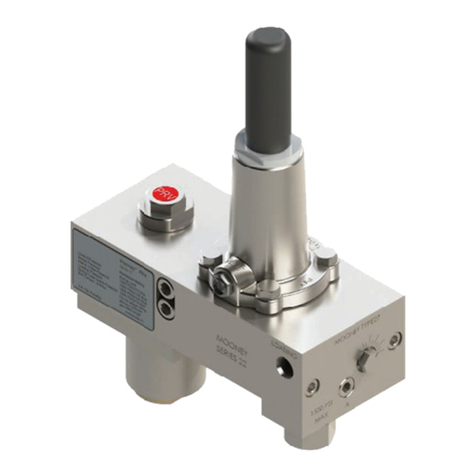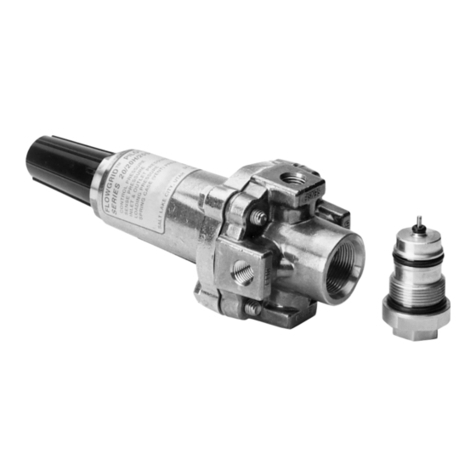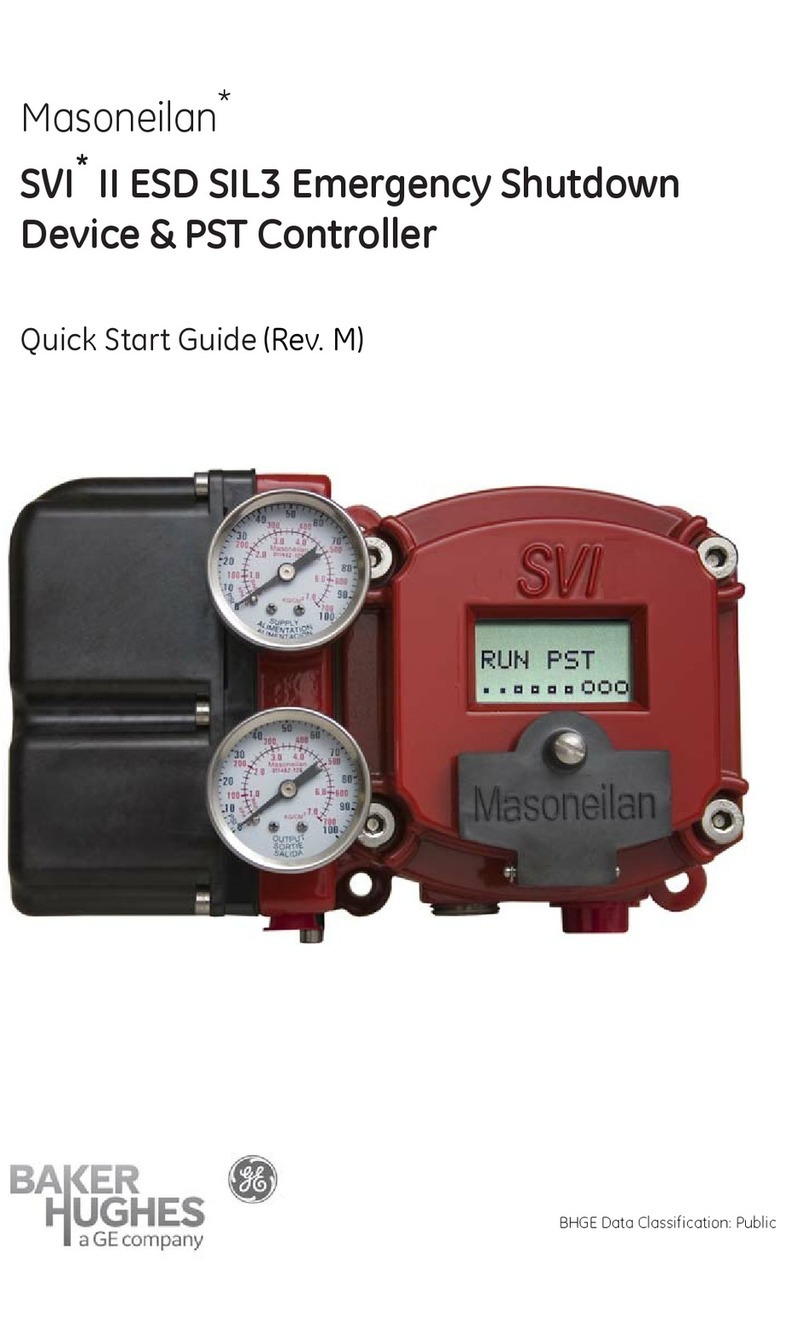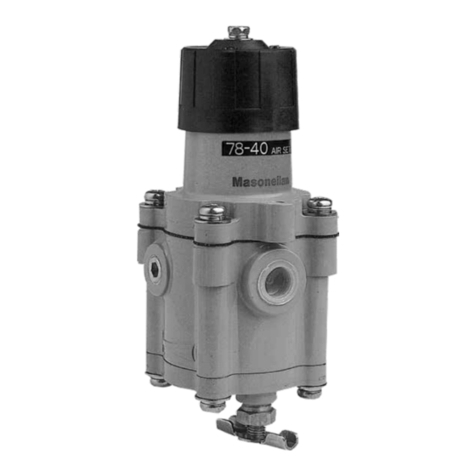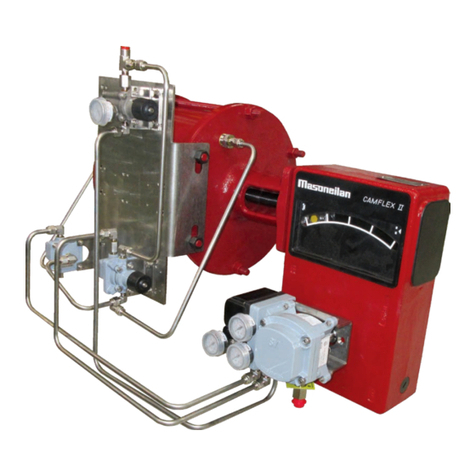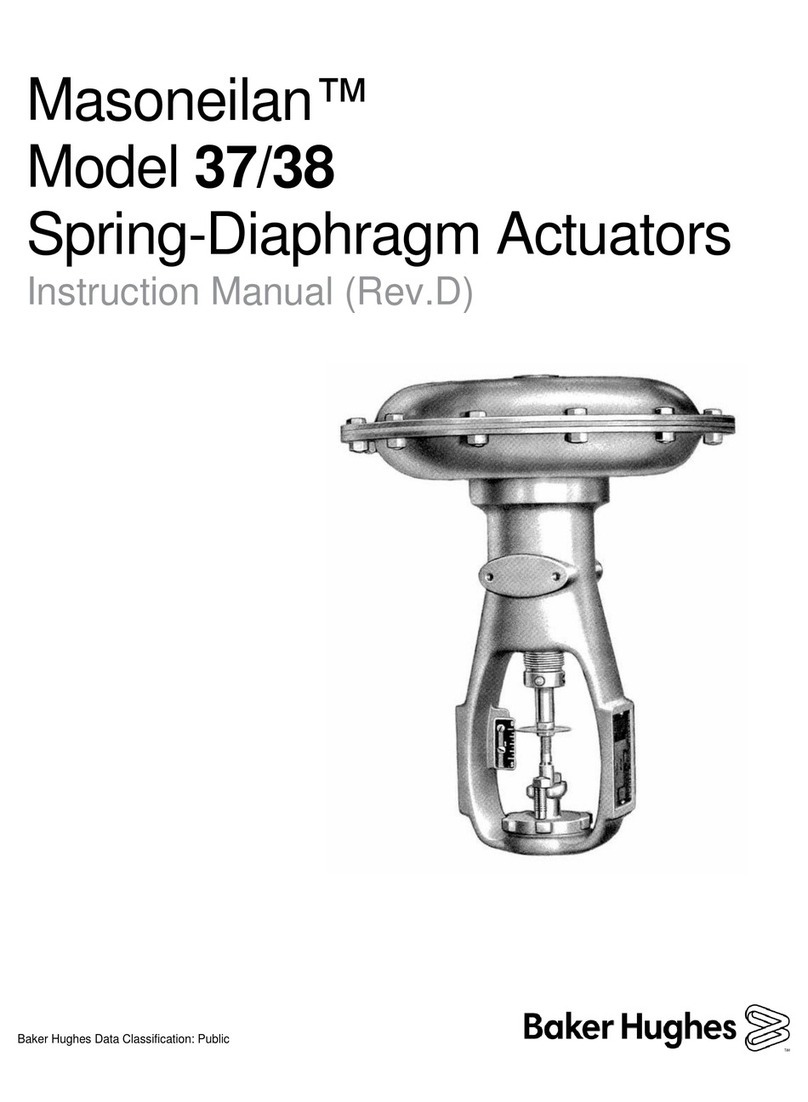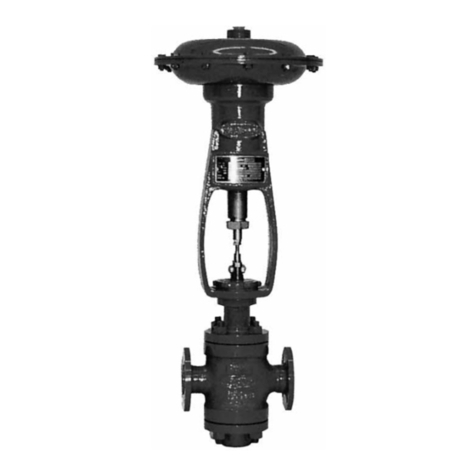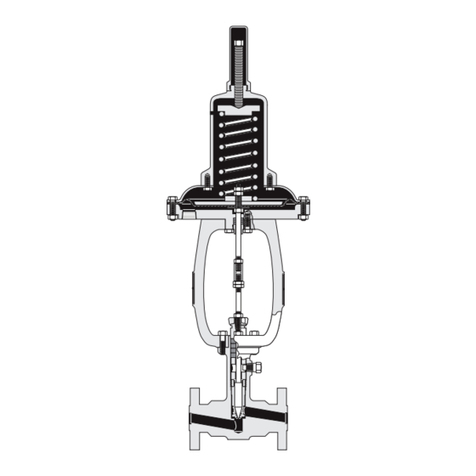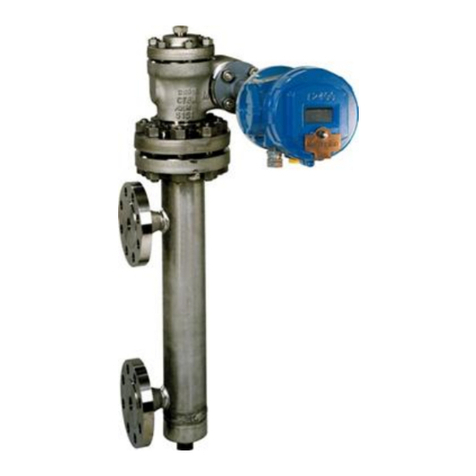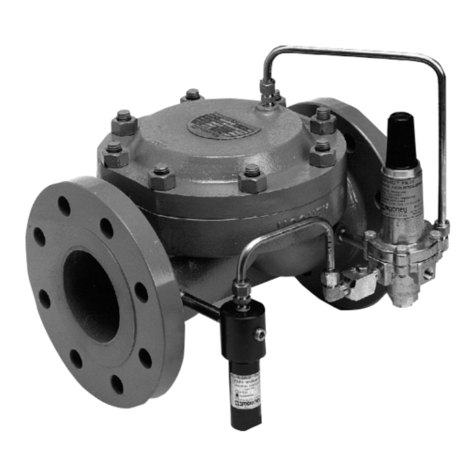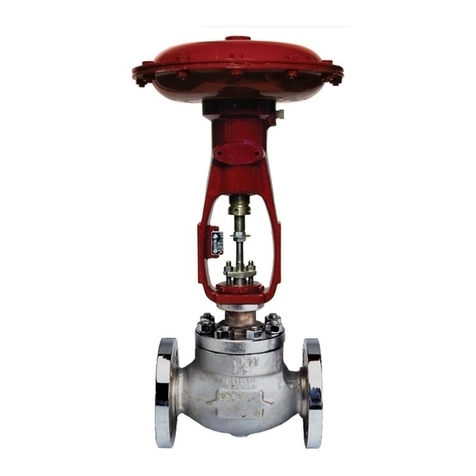
4 | Baker Hughes Copyright 2021 Baker Hughes Company. All rights reserved.
Hydrostatic Testing
Installation and testing of the FlowMax HPRegula-
tor should be made by trained, qualied personnel
familiar with high pressure piping and pilot operated
regulators.
All FlowMax HP regulators are hydrostatically tested at the
factory prior to shipment according to ISA-S75.19 and EN 334
standards. If it is necessary to retest the Regulator body, follow
the procedures listed below.
Note: This Procedure applies to the regulator body only. If
actuator retesting is required, contact the factory for proper
procedures.
1. Disconnect and remove the pilot inlet, actuator sense control
line(s) and loading lines.
2. Remove the body-to-actuator bolts and remove the actuator
and pilot.
3. Plug the pilot supply line in the regulator body or, if applicable,
the pilot filter.
4. Plug the flange/actuator mounting surface on the body.
Note: A plug for hydrostatically testing the Body is available
from the factory.
6. Pressurize the system to the required maximum hydrostatic
pressure.
7. After the hydrostatic test is completed and the body is dry and
clean, follow the assembly procedures in the maintenance
section of this manual.
Installation
Personal injury, equipment damage, or leakage due to
explosion of accumulated gas or bursting of pressure
containing parts may result if this regulator is over
pressured or is installed where service conditions
could exceed the limits given in the specication of
this manual or on the nameplate, or where conditions
exceed any ratings of the adjacent piping or piping
connections. Verify the limitations of both regulator
and pilot to ensure neither device is over pressured.
To reduce the chances of such injury or damage,
provide pressure relieving or pressure limiting de-
vices (as required by the U.S. code of Federal Regula-
tions, by the National Fire Codes of the National Fire
Protection Association, or by other applicable codes)
to prevent service conditions from exceeding those
limits. Additionally, physical damage to the regulator,
pilot, or tubing can cause personal injury and/or prop-
erty damage due to explosion of accumulated gas. To
reduce the chances of such injury and damage, install
the regulator in a safe location.
1. Personnel: Installation of the FlowMax HP regulator should
be performed by trained, qualified personnel familiar with
high-pressure piping and pilot- operated regulators.
2. Prior Inspection: Inspect the main regulator, pilot, and
tubing for any damage that might have occurred in shipping.
Make sure the body, pilot sense lines, and piping are clear
and free of foreign material.
3. Flanged End Regulators: Use suitable line gaskets and
good bolting practices with flanged bodies. Incremental
tightening of the line bolts in a crisscross pattern is
recommended.
Gas regulators installed in conned or enclosed
spaces should be provided with adequate ventilation
to prevent the possibility of gas buildup or accumu-
lation from leaks and venting. Leaks or vented gas
may accumulate causing personal injury, death, or
property damage. Pilot spring cases and the regulator
enclosure should be vented to a safe area away from
air intakes, or any hazardous location. The vent lines
and stacks must be protected against condensation
and clogging.
